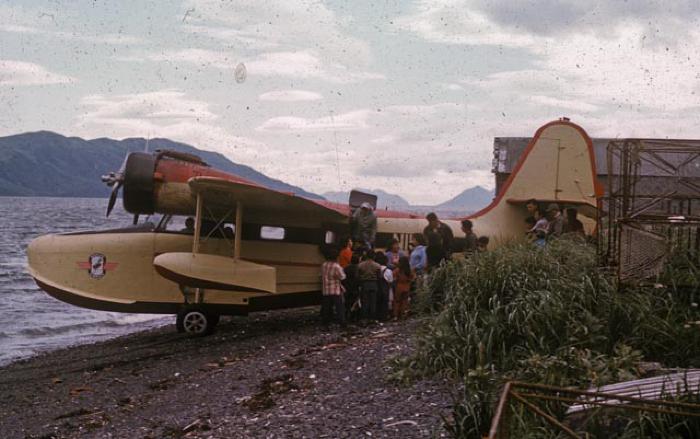Airplane — Tengausqaq

Today, each of Kodiak’s remote Alutiiq villages receives regular airline service. Many days, commuter flights from town carry passengers, freight, and mail across the archipelago. Wheeled planes and floatplanes are now a common, efficient way to travel, but older residents recall the days of limited air service.
Until the construction of Kodiak’s Naval Air Station and FAA Communication Station during World War II, there was no regular plane service to Kodiak. People and goods traveled by boat, taking days to reach places like Anchorage, Homer, and Karluk. Coast Guard cutters had to evacuate the seriously ill to Seward.
World War II construction encouraged commercial flights to Kodiak by creating runways and an air traffic control system. In the 1950s, the construction of gravel airstrips in Kodiak villages extended the reach of air service. Although it was expensive, villagers were drawn to the ease of air travel, and the use of mail boats ended.
The arrival of scheduled plane flights is now part of the rhythm of village life. Adults phone Kodiak air taxis to report village weather. Children scan the skies, competing to be the first to see an approaching plane, and everyone listens for the hum of aircraft engines. This sound signals that it is time to jump in a car and head for the airstrip: a gravel runway found in every community.
